Learn how to make bread 365 days a year while saving money. Discover tips, financial benefits, and essential recipes from "Everyday Bread Recipes." Embrace a sustainable, homemade bread lifestyle with our expert guide.
How do you get back to basics and start making your bread? Let's be honest: It is effortless to go to the local grocery store, pick up our favorite loaves of bread, English muffins, and bagels, and then have bread on the counter.
Over two years ago, I embarked on a journey to make all our bread products for our large family 365 days a year. Having baked for over 20 years and mastered my bread recipes, it was still a new level to tackle the task of not buying bread at the store. What a rewarding challenge it has been!
The financial impact was significant—by baking our bread consistently and buying bulk ingredients throughout the year, I estimated an annual savings of $3500 as of 2023. This allowed us to allocate funds to other priorities on the homestead.
Today, I will share the insights and strategies that helped me achieve this goal, highlight some essential every day bread recipes, and explain why investing in my ebook, "Everyday Bread Recipes," can help you save money while enjoying delicious homemade bread every day.
The Journey of Baking Bread Every Day
Baking bread daily has been a transformative experience for our family. Not only did it lead to substantial financial savings, but it also brought us closer to a sustainable, self-sufficient lifestyle. The aroma of fresh bread wafting through the house, the joy of kneading dough, and the satisfaction of slicing into a warm loaf are simple pleasures that have become part of our daily routine. The kids will walk into the house and say, “I smell fresh bread!” And clear a loaf fresh out of the oven.
The Financial Impact of Homemade Bread
When I decided to bake all our bread, the financial savings were a pleasant surprise. We significantly reduced our grocery bills by purchasing ingredients like flour, yeast, and salt in bulk.
Here’s how we did it:
- Bulk Buying: Purchasing a 50-pound bag of flour, large quantities of yeast, and other essentials saved us a lot of money. Bulk buying reduces the cost per unit, making homemade bread much more economical than store-bought. A bulk bag of flour will last me three months and yeast six months.
- Reducing Waste: Baking at home allowed me to make only what we needed, reducing food waste. We could also repurpose leftover bread into breadcrumbs, croutons, or bread pudding. However, most of the time, there are no leftovers.
- Health Benefits: Homemade bread contains no preservatives or artificial additives, ensuring our family enjoys healthier, more natural food.
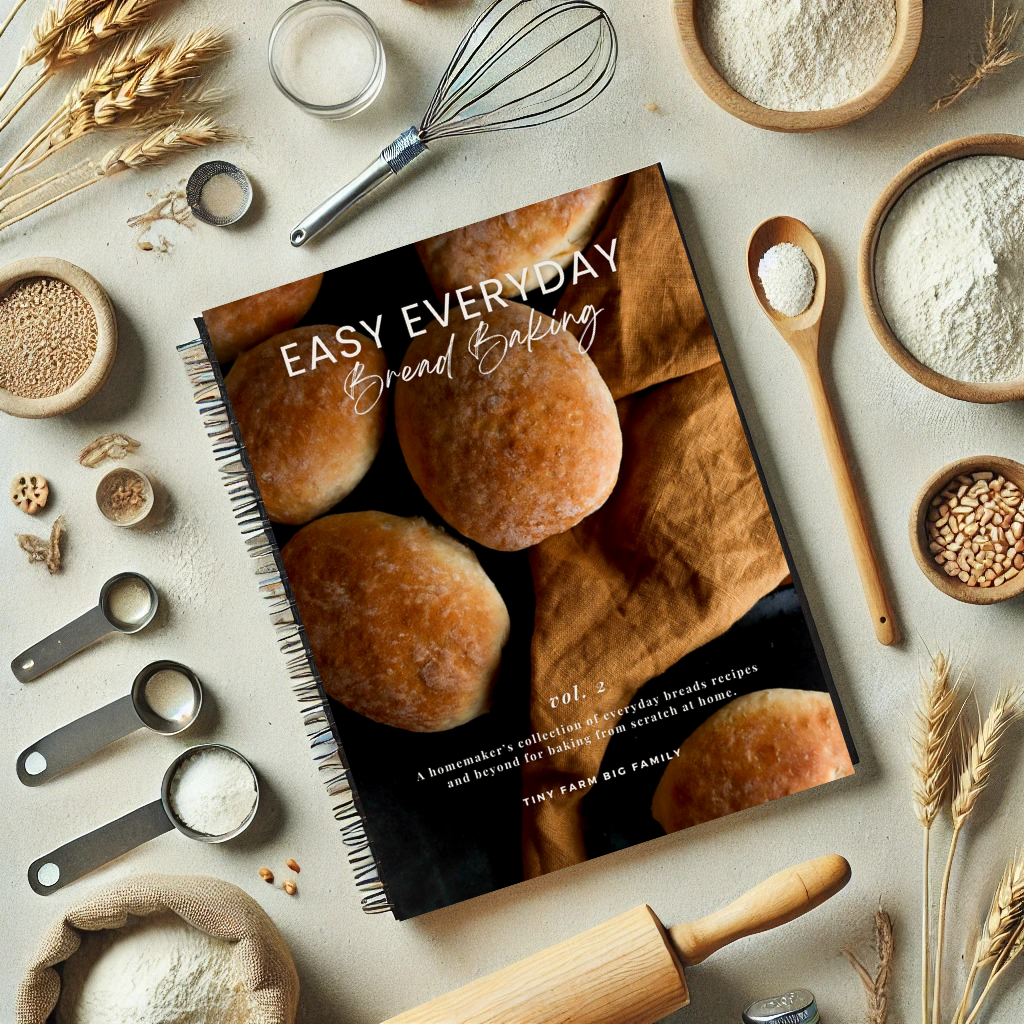
Everyday Bread Recipes to Get You Started!
My Everyday Bread Recipes Vol. 2 contains all the everyday bread recipes you need to get started. This comprehensive guide features recipes for English muffins, tortillas, crescent rolls, croissants, burger buns, and more. Each recipe is designed to be easy to follow, even for beginners, and includes cost estimates to help you understand your savings.
- English Muffins are a morning staple in our house. They are perfect for breakfast sandwiches or just toasted with butter.
- Flour Tortillas: Homemade tortillas are a game-changer. They're softer, more flavorful, and less expensive than store-bought ones.
- Crescent Rolls: These buttery, flaky rolls are perfect for dinner parties or a special treat for your family.
- Croissants: While they require more time and patience, homemade croissants are worth the effort. Their rich, buttery layers are a delight.
- Burger Buns: Elevate your burger night with homemade buns. They’re soft, slightly sweet, and far superior to store-bought options.
Why Investing in This Book Will Help You Save:
Investing in my ebook, "Everyday Bread Recipes," is an investment in your financial and culinary well-being. Here’s why:
- Cost-Effective Recipes: The ebook includes a cost breakdown for each recipe, so you know how much you save by making your bread at home.
- Easy to Follow: The recipes are designed to be simple, even for those new to baking. With step-by-step instructions, you can bake like a pro in no time.
- Variety: The ebook offers various bread recipes for every meal and occasion. From everyday sandwich bread to special treats like croissants and crescent rolls, you’ll never get bored of homemade bread.
- Healthier Options: Homemade bread allows you to control the ingredients, ensuring healthier, preservative-free options for your family.
- Sustainable Living: You reduce packaging waste and carbon footprint by making your bread. It’s a small step towards a more sustainable lifestyle.
Tips for Baking Bread Consistently:
Consistency is key when it comes to baking bread daily. Here are some tips that helped us maintain our baking routine:
- Set a Schedule: Plan your baking days around your family’s needs—for example, baking sandwiches twice a week and specialty bread on weekends.
- Batch Baking: Make larger batches and freeze extra loaves for later use. This saves time and ensures you always have bread on hand.
- Keep Ingredients on Hand: Always have enough ingredients to avoid last-minute store trips.
- Stay Organized: Keeping your baking area clean and organized will make the process more enjoyable and efficient.
Storing Homemade Bread:
Proper storage is essential to keep your homemade bread fresh:
- Room Temperature: To maintain its crust, store bread at room temperature in a bread box or a paper bag.
- Freezing: Wrap loaves tightly in plastic wrap and aluminum foil before placing them in the freezer. You can also use a vacuum sealer with vacuum bags. Thaw at room temperature when ready to use.
- Refrigeration: Avoid storing bread in the fridge as it can dry out the bread faster.
Troubleshooting Common Bread Baking Issues:
Even experienced bakers encounter issues. Here are some common problems and solutions:
- Dense Bread: This can be caused by under-proofing or too little yeast. Ensure your dough has risen adequately before baking.
- Crust Too Hard: Overbaking or high oven temperatures can cause a hard crust. Use an oven thermometer to check accuracy.
- Flat Loaves: Over-proofing or weak gluten structure can result in flat loaves. Make sure your dough is adequately kneaded and not over-risen.
Embracing the Journey: The Joys of Homemade Bread:
Baking bread daily is more than a cost-saving measure; it's a fulfilling and joyful experience. The aroma of fresh bread wafting through the house, the satisfaction of slicing into a warm loaf, and the pride in providing homemade goodness for your family make this journey worthwhile. It's a journey filled with joy and satisfaction.
Making all of our bread products for a year has taught us patience, perseverance, and the beauty of simplicity. Each loaf, roll, and muffin is a testament to the love and effort that goes into homemade bread. If you're ready to embark on this journey, my ebook, "Everyday Bread Recipes," is the perfect companion. It includes all the essential recipes you need to start, from English muffins to croissants.
Baking bread daily for a year has been a transformative experience for our family. It has brought us closer to a sustainable lifestyle and significantly saved us money. With some planning, bulk ingredient purchases, and the right recipes, you can enjoy the rewards of homemade bread every day.
If you're ready to take the plunge and start baking your bread, "Everyday Bread Recipes Vol. 2" guides you. With various recipes and cost-saving tips, you'll find that making your bread is economical and incredibly satisfying. I spent yearly under $300.00 on yeast and bulk flour to make a year's worth of bread for our family of 9.


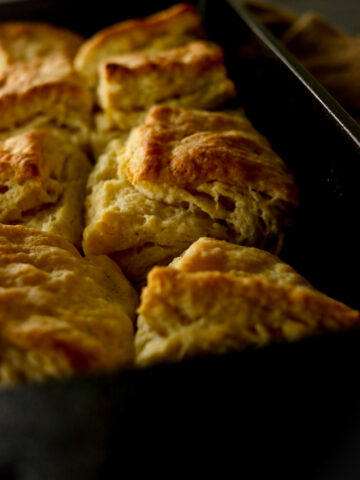
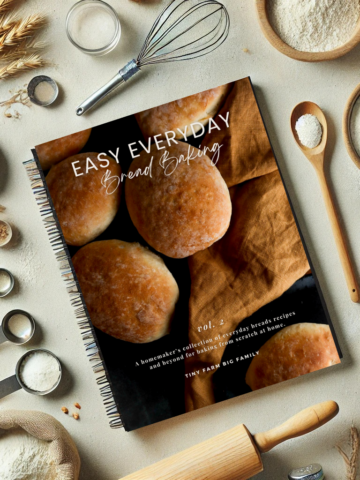
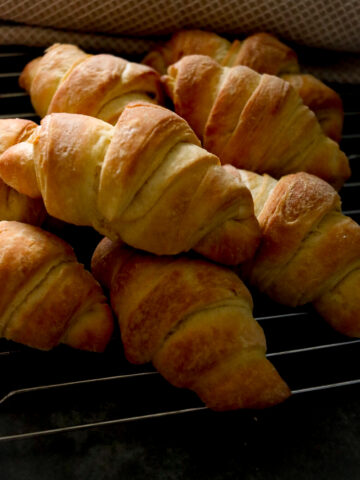
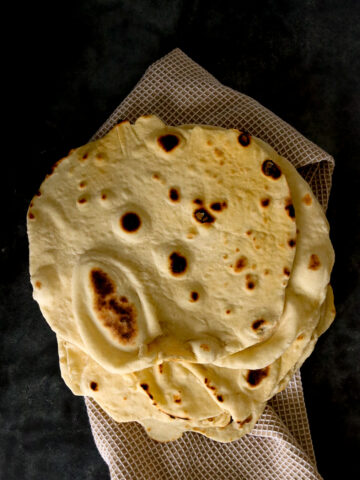
Leave a Reply